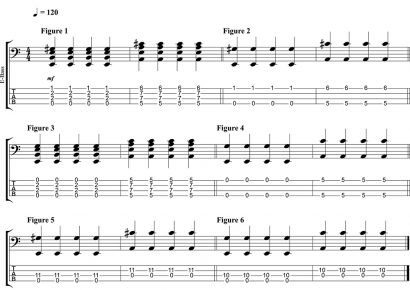The Common Four
There are basically four standard polar patterns used in microphone capsules. These patterns determine how the capsule picks up its sound and from what direction. This is a critical choice when on a loud stage where you need to capture only your voice and reject the onset of feedback.
These main polar patterns are Cardioid, Super-Cardioid, Figure-of-Eight and Omni. The latter two are just about useless on a live stage as they pick up a signal from multiple directions and are likely to deliver a world of feedback when not used in a quiet studio.
The two most common polar patterns you will use for vocal microphones on stage are Cardioid and Super-Cardioid. These essentially pick up sound from in front of the capsule and reject from the side and rear to varying degrees, but it is the subtle differences between the two that make the choice of one or the other so very important.
Cardioid
The Cardioid polar pattern gets its name from the heart-shaped pickup pattern it captures sound from when viewed from above. The Cardioid pattern captures sound in front and out to both sides, but it tapers away as the source moves around to the rear of the capsule. Basically, this pattern is used for a vocal when the source is close to the capsule and might be moving around a little in front of it. The subtle side capture allows for the singer to move around slightly and still be heard clearly.
This does present some problems with fold back monitors though as the side rejection isn’t exceptionally strong. If you are using a fold back monitor speaker that is located directly behind the microphone, you shouldn’t have any troubles, but a single or pair of fold back monitors placed out to the side of you microphone position can cause problems.
Super-Cardioid
The Super-Cardioid polar pattern is a variation of the Cardioid, but it’s more directional. It has a narrower scope of where it will pick up sound from and has to be used with a little more delicacy. This means the singer can’t move too far to the side of the microphone or the volume will just drop away. At the same time it also means that there is very little chance of feedback developing from the side of the capsule. As a more directional microphone, these are often used from instrument purposes on stage when you want just one sound source captured at once.
As a vocal microphone, the Super-Cardioid allows you to use fold back monitors located at a 45 degree spread from your microphone stand or even side fill monitors. The one drawback in the nature of a Super-Cardioid polar pattern with fold back monitors is that there is a slight capture of signal from directly behind the microphone itself. This is a result of the way the sound is filtered in behind the capsule to narrow the pickup pattern and can’t really be avoided.
So, using a Super-Cardioid microphone with a monitor speaker directly behind the microphone isn’t ideal and can sometimes result in feedback with high volume monitors or high gain settings on the microphone preamp.
So, where does this leave you, the singer, when it comes to choosing the right microphone for your performance? There isn’t really one ‘right’ microphone for all occasions. You’ll need to consider not only the sound and tone of the microphone, but the set up of the performing space. When it comes to getting the right polar pattern, you can never really know until you find yourself on a loud stage with fold back speakers and an audience all making noise behind your microphone.
The thing is, every stage, every room and every audience is different. You really can’t expect there to be the ‘one’ microphone to tackle all these variants. My suggestion, as I have maintained for many years, is that every singer keeps a pair of microphones, one Cardioid and one Super-Cardioid with the same sound. That way, when you arrive at a venue, you will know what sound you have, but you will also be prepared for the variations in the environment.







